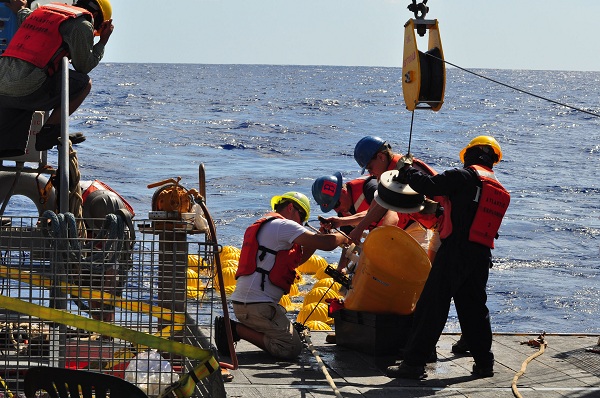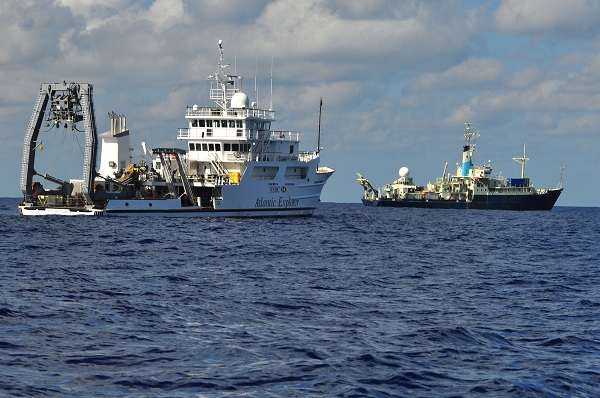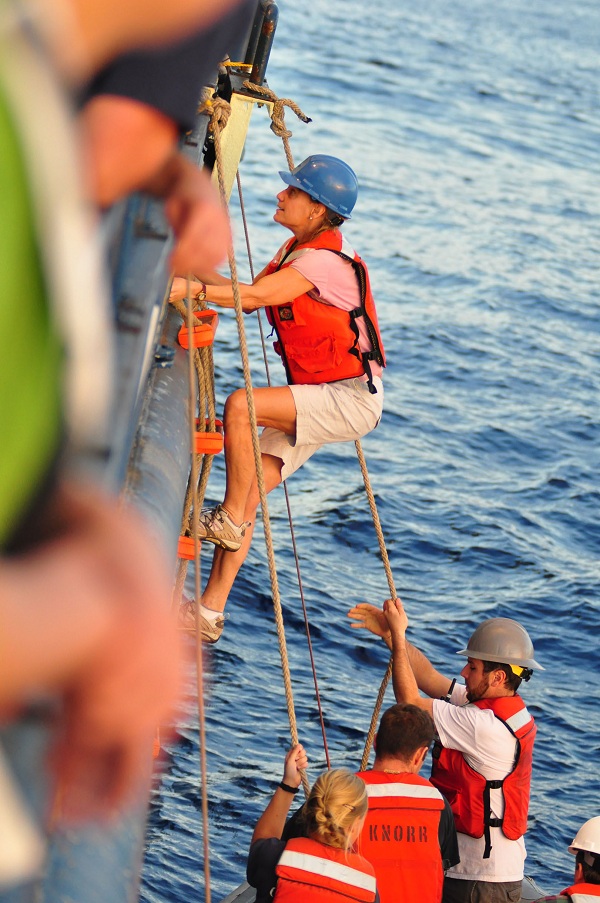Ocean Rendezvous Rescues Research Project
Source: Bernews
Ruth Curry, Senior Research Specialist at Woods Hole Oceanographic Institution (WHOI), is used to the challenges that come with deep-ocean research; after all, she has spent the last three decades measuring circulation pathways in the Atlantic Ocean. But she never expected that, on a calm day in November, she’d require the help of two ships and an underwater robot to literally save her research program, an undertaking she describes as, “the most exciting thing I’ve done in my 32 years of going to sea.”
As chief scientist of the DynAMITE (Dynamics of Abyssal Mixing and Interior Transport Experiment) field program, Ms. Curry has been visiting Bermuda since 2010, when she teamed up with the Bermuda Institute of Ocean Sciences (BIOS) to put her program into action.
After initially being chased back to port by Hurricane Igor, she successfully installed an array of six research moorings spanning 360 miles down the southeast slope of Bermuda Rise. Each of the six moorings consisted of a sea anchor, two acoustic releases, approximately 4000m of cable, and two robotic profilers that run up and down the cable making repeat measurements of ocean currents and water properties (e.g., pressure, temperature and salinity).
Ms. Curry and her team plan to use the data collected by the moored profilers to better understand deep ocean circulation in the western Atlantic Ocean. These ocean currents, which flow at depths 3000-6000m below the surface, play a key role in global climate regulation. Surface ocean currents transport heat from the tropics to the poles, warming the atmosphere along their flow path.
In certain polar and subpolar regions, the cooling surface waters become cold and dense enough to sink into the abyssal region of the ocean where deep currents return the water back to the tropics. Along these deep flow paths, the cold waters are transformed by several processes into warmer, lighter waters that rise back to the surface to complete the cycle. A main goal of DynAMITE is to measure the strength of these flows and the deep ocean mixing that sets them in motion.
However, when Ms. Curry went to retrieve the moored profilers in May 2012, she encountered a problem: one of the moorings wouldn’t release from its anchor. Faced with the loss of valuable equipment and more than two years of data, she literally called in the troops: the 171’ research vessel Atlantic Explorer (BIOS), the 279’ research vessel Knorr (WHOI), and the remotely operated vehicles—or ROVs—Jason/Medea (WHOI).
With the anchor located 6000m below the surface it was a risky task to free the profiler, but the experienced team operating the Jason/Medea robots successfully navigated the ROVs through the dark waters to cut the nylon release cord, sending the two profilers (and their data) to the surface for retrieval.
The entire rescue mission took about half a day, requiring 4 hours for Jason/Medea to descend to depth and 4 hours to return to the surface—not to mention deployment/retrieval time and the 36 hours of travel from Bermuda to the mooring site.
Looking back on the mission, Ms. Curry said, “Hats off to all the people at BIOS, WHOI, and the National Science Foundation (NSF) who made this possible; it involved a lot of coordination and a little luck” for all of the pieces to fall into place. Having collected these last 2 profilers, Ms. Curry breathed a sign of relief and has now turned her attention to analyzing the measurements collected over the past two years.
– Photos courtesy of Andrew Collins, BIOS



